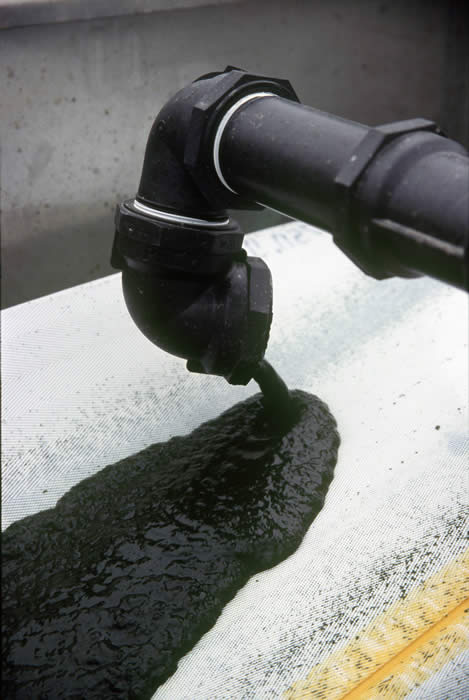 Fifth contribution to the Imagining 2020 series of essays comes from Phillip Mills, executive director of Les Mills International, who describes his vision for a low carbon future based on ‘clean technology’. Phillip, with a group of leading members of the NZ business community, has been urging the NZ government to work on cleantech/greentech initiatives. He received a World Class New Zealand Award for New Thinking in 2009 and was Ernst & Young New Zealand Entrepreneur of the Year in 2004.
Fifth contribution to the Imagining 2020 series of essays comes from Phillip Mills, executive director of Les Mills International, who describes his vision for a low carbon future based on ‘clean technology’. Phillip, with a group of leading members of the NZ business community, has been urging the NZ government to work on cleantech/greentech initiatives. He received a World Class New Zealand Award for New Thinking in 2009 and was Ernst & Young New Zealand Entrepreneur of the Year in 2004.
The transition to a low carbon future is something most economies are grappling with, and if they’re not, they should be. There’s much talk about what this might look like and whether it will require cataclysmic change. From where I sit the short answer is no. And that’s because my vision for a low carbon future is based on switching the dialogue from costs to opportunities. The opportunities are those inherent in the clean technology boom and they are huge.
While most New Zealanders agree we need to lift our economic game and get growth ticking at a faster rate, we are currently busting our guts to raise productivity under what’s become a tired, outdated economic structure.
Consider the following:
- We’re working longer hours but achieving lower productivity than others in the OECD.
- Unemployment is at its highest level in a decade
- As a small pastoral economy we are at risk of being sucked dry by spiralling resource costs because of the increasing affluence of emerging economies.
- Cracks have appeared in our 100% Pure New Zealand brand, compared with our actual behaviour. Several articles in international media last year took us to task for our environmental performance and it’s clear we need to do more, environmentally, to protect our brand and our export and tourism industries. Instead, in firming up intentions to intensify farming and allow mining on Crown land including parts of the conservation estate, the Government is running the risk of further sacrificing our brand, if not our environmental quality.
It’s time for an entirely new economic engine to power us towards a brighter future within a low-carbon economy.
It’s time for an entirely new economic engine to power us towards a brighter future within a low-carbon economy. This requires a shift in our focus to what’s called ‘clean technology’ – developing and commercialising innovative, green technologies in the areas of clean energy, clean transportation, clean industry, clean agriculture and the environment.
This isn’t just another short-lived, green fad for those with a penchant for tree-hugging. The ‘green wave’ may be slow rolling at present but will, over the next decade, gather force for an economic boom on a scale to rival the information age and the industrial revolution. Certainly, this is an area where New Zealand needs to be ahead of the pack.
A number of New Zealand business leaders have teamed together to cast a vision for a clean economy. We believe we have a once-in-a-lifetime opportunity to transform New Zealand’s economy by gaining early-mover status in the emergent, clean technology market. This year, we have sent a book by Australian economist Ben McNeil: The Clean Industrial Revolution to all Members of Parliament, detailing the compelling economic argument for our case.
In summary, putting focus on the emergent, clean-tech market presents a compelling opportunity for New Zealand to:
- Reverse our slide down the OECD tables through the creation and attraction of major new industries and the addition of significant value to our biggest current ones
- Add brand value and reduce the risk of significant and possibly irreparable brand damage to exports and tourism
- Cut costs at a national and individual business level
- Reduce our exposure to risks such as escalating foreign oil and resource costs, carbon costs and tariffs (legislated and market-led).
A clean, low-carbon economy is highly efficient and fiercely competitive. It holds the promise of prosperity for all New Zealanders by inspiring new jobs and retraining, higher-value exports and a stronger eco-brand to attract overseas tourists and consumers.
The nay-sayers talk about the cost of developing and implementing clean technologies. But the fact is the opportunities far outweigh the costs.
The nay-sayers talk about the cost of developing and implementing clean technologies. But the fact is the opportunities far outweigh the costs. Denmark, with a similar population to New Zealand, decided to champion wind energy and now supplies more than half the world’s wind turbines, The Danes have added tens of thousands of high value jobs to their economy, reduced their carbon intensity by a third in ten years, dramatically reduced their exposure to imported energy costs and created a new export business the size of Fonterra – earning $15 billion a year in exports alone.
Germany and Sweden, also early movers in green-tech, have had similar results and the rest of the world is beginning to wake up. In the US, President Barack Obama has promised significant investment to move to an alternative energy economy. Indeed, American businesses are investing heavily in the development and use of clean technologies as the basis of the country’s next wave of wealth generation.
Countries and companies who are investing in clean technologies also reduce expenditure on raw materials and energy, achieve greater efficiency and less waste at a huge rate of return on their investments.
To “do a Denmark” and really win this game as a nation, New Zealand needs to identify our greatest opportunities – clean agriculture and various renewable energy sources are obvious candidates – then pin our ears back and go for them.
We’re already blessed with huge natural advantages in this area. And we can be encouraged that hundreds of Kiwi companies already recognise this and are quietly leading the way. They include start-up companies such as Lanzatech – making ethanol from flue gases; to Air New Zealand – recognised as the world’s greenest airline. Todd Energy is investing in tidal power generation in the Kaipara and our biggest exporter, Fonterra, outlined its benefits from climate change, energy and sustainability strategies at the World Environment Day symposium in June.
We need the same visionary leadership that led to the creation of our hydro dams and state forests in the 1930s
Local supporters of the clean-tech revolution now number more than 100 senior business leaders and we’re working hard to urge the Government to set up a joint government and business investigative committee to identify the best opportunities and the most efficient ways to capitalise on them through a “clean tech’ strategy for New Zealand. We need the same visionary leadership that led to the creation of our hydro dams and state forests in the 1930s; the Vogel Government’s development of telegraph, national railways and shipping links and the introduction of refrigerated shipping that opened our farming industry to the world.
Rather than playing catch-up with Australia, let’s surpass our trans-Tasman cousins with a strong, clean economy that enables us to live our values and is viable over the long-term. I’d welcome discussion on this important issue.

 Blenheim company Aquaflow which works on the production of bio-fuel from algae, and whose progress Hot Topic has reported on several times (follow the Aquaflow tag) has announced a new venture, this time in the US. They will be working with a Honeywell company at an industrial site in Hopewell, Virginia. The aim of the project, supported by a $1.5 million cooperative agreement with the US Department of Energy, is to capture CO2 from exhaust stacks and use it to enhance algae growth in nutrient wastewater from the manufacturing facility.
Blenheim company Aquaflow which works on the production of bio-fuel from algae, and whose progress Hot Topic has reported on several times (follow the Aquaflow tag) has announced a new venture, this time in the US. They will be working with a Honeywell company at an industrial site in Hopewell, Virginia. The aim of the project, supported by a $1.5 million cooperative agreement with the US Department of Energy, is to capture CO2 from exhaust stacks and use it to enhance algae growth in nutrient wastewater from the manufacturing facility. The latest estimate of
The latest estimate of